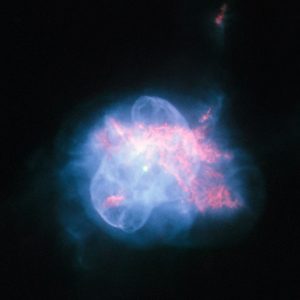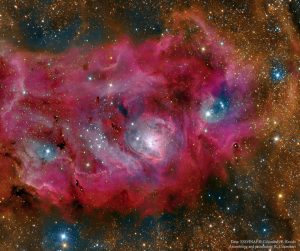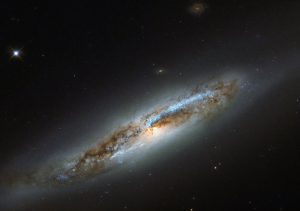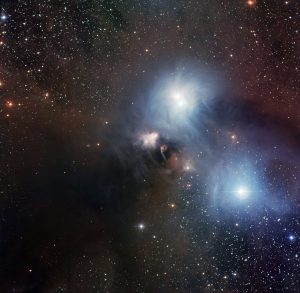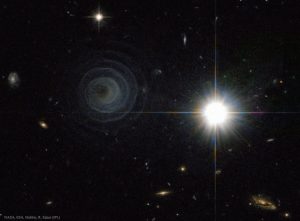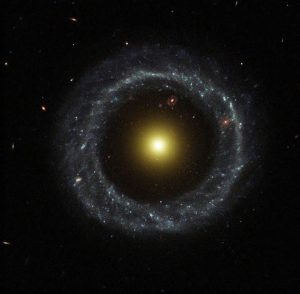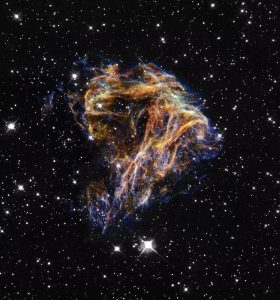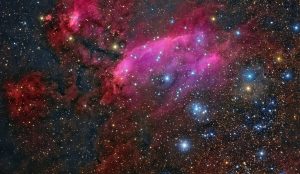Immagini
NGC 6210: Una Delicata Bolla Blu
Questa straordinaria e curiosa nebulosa planetaria, NGC 6210, si trova a circa 6500 anni luce di distanza, nella costellazione di Ercole. È stata scoperta nel 1825 dall’astronomo tedesco Friedrich Georg Wilhelm Struve . Continua a leggere
Juno Immortala una “Perla” su Giove
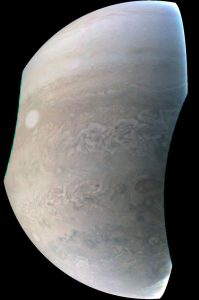 Questa splendida immagine, ripresa dalla camera JunoCam a bordo della sonda Juno della NASA, mette in evidenza una delle violente tempeste che appaiono come ovali biancastri nell’emisfero meridionale del gigante gassoso, formando quasi un “filo di perle” (string of pearls). Continua a leggere
Questa splendida immagine, ripresa dalla camera JunoCam a bordo della sonda Juno della NASA, mette in evidenza una delle violente tempeste che appaiono come ovali biancastri nell’emisfero meridionale del gigante gassoso, formando quasi un “filo di perle” (string of pearls). Continua a leggere
La Nebulosa Laguna in Alta Definizione
Le stelle combattono gas e polveri nella Nebulosa Laguna ma vincono… gli astrofotografi. Nota anche come M8, questa fotogenica e spettacolare nebulosa è visibile anche ad occhio nudo in direzione della costellazione del Sagittario. Continua a leggere
Gioielli del Cielo Australe
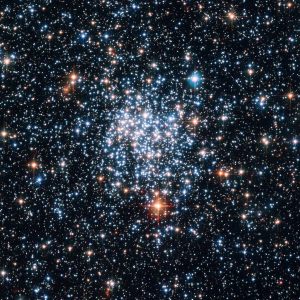 In questa straordinaria immagine ripresa dal telescopio Hubble l’ammasso stellare aperto NGC 265 s’illumina del bagliore di una miriade di stelle, simili a pietre preziose. Continua a leggere
In questa straordinaria immagine ripresa dal telescopio Hubble l’ammasso stellare aperto NGC 265 s’illumina del bagliore di una miriade di stelle, simili a pietre preziose. Continua a leggere
Metamorfosi nella Vergine
Questa volta l’obiettivo del telescopio Hubble è una galassia molto particolare, NGC 4388, soggetta suo malgrado ad una trasformazione radicale che ne ha alterato l’intera struttura, quasi si trattasse di una vera e propria metamorfosi. Continua a leggere
Un Acquerello Cosmico
Questa magnifica visione della regione attorno alla stella R Coronae Australis è stata realizzata con immagini riprese con il Wide Field Imager (WFI) all’Osservatorio dell’ESO. R Coronae Australis si trova nel cuore di una vicina regione di formazione stellare ed è circondata da una nebulosa a riflessione di una delicata tonalità bluastra avvolta in una vasta nube di polveri. Continua a leggere
La Straordinaria Spirale in LL Pegasi
Cosa ha generato la straordinaria formazione a spirale visibile nell’immagine a sinistra? Nessuno può affermarlo con certezza, sebbene probabilmente questa strepitosa struttura sia in relazione ad una stella parte di un sistema binario, che sta iniziando la fase di nebulosa planetaria, con conseguente espulsione degli strati esterni della sua atmosfera. Continua a leggere
L’Oggetto di Hoag
Un anello quasi perfetto di calde stelle blu disposte attorno al nucleo giallastro di una galassia insolita: è l’Oggetto di Hoag. L’intera galassia si estende in ampiezza per circa 120.000 anni luce, leggermente più grande della nostra Via Lattea. L’anello blu è dominato dalla presenza di gruppi di giovani stelle massicce, in netto contrasto con il nucleo di colore giallo composto da stelle per lo più vecchie. Continua a leggere
Fuochi d’artificio stellari
Nessuno spettacolo pirotecnico estivo potrebbe eguagliare la delicata trama di questi filamenti e la pittorica bellezza di queste scintille colorate. Eppure N49 rappresenta l’ultimo atto, distruttivo e spettacolare, del ciclo evolutivo di una stella. Continua a leggere
IC 4628: La Nebulosa Gambero
A sud di Antares, nella coda della costellazione ricca di nebulose dello Scorpione, è possibile ammirare la nebulosa a emissione IC 4628. Continua a leggere
